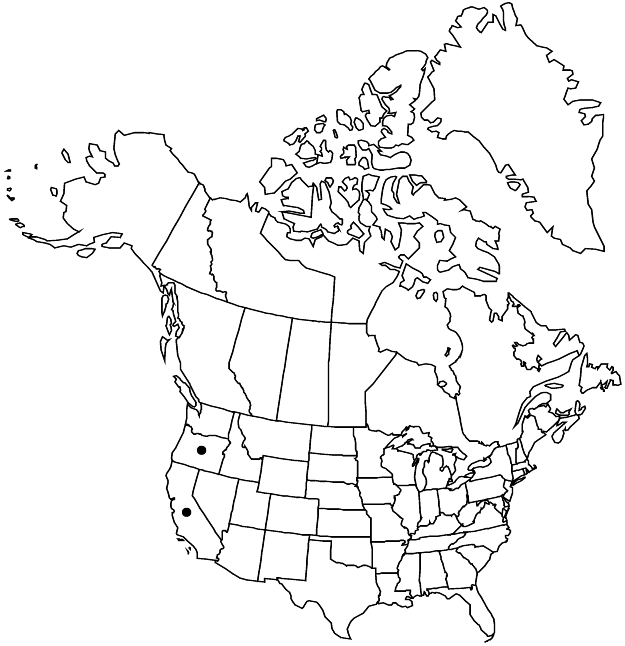Minuartia cismontana
Madroño 39: 289, figs. 1, 3. 1992.
Plants annual. Taproots filiform. Stems erect, green or reddish purple, (5–)8–20(–25) cm, glabrous, internodes of all stems 5–7 times as long as leaves. Leaves not overlapping, connate proximally, with loose, scarious sheath 0.1–0.3 mm; blade green or reddish purple, 3-veined proximally, midvein prominent abaxially, lateral veins 0.2–0.25 times as long as blade, straight to outwardly curved, flat, lance-attenuate to linear, 2–7(–9) × 0.5–1.2(–1.8) mm, flexuous, margins not thickened, scarious proximally, smooth, apex green or purple, rounded to acute, often mucronate, shiny, glabrous; axillary leaves occasionally present. Inflorescences 5–20-flowered, open cymes; bracts subulate, herbaceous, often scarious-margined proximally. Pedicels (0.7–)1–3(–3.5) cm, glabrous. Flowers: hypanthium disc-shaped; sepals strongly 3(–5)-veined, lance-linear to lanceolate (herbaceous portion narrowly lanceolate to lance-oblong), 3.2–5.5 mm, not enlarging in fruit, apex green to purple, acute, not hooded, glabrous; petals oblanceolate to oblong-elliptic, 1–1.5 times as long as sepals, apex obtuse to rounded, entire. Capsules on stipe about 0.2 mm, ± ovoid, 3.5–5.8 mm, equaling or longer than sepals. Seeds brown or reddish, asymmetically reniform with radicle prolonged into beak, not compressed, 0.7–1 mm, minutely papillate.
Phenology: Flowering spring–summer.
Habitat: Dry woodlands, chaparral, often on serpentine, (100-)400-1700 m
Discussion
Minuartia cismontana is closely related to M. californica and M. pusilla, and has been overlooked as the former for many years. Phenology and elevation appear to segregate the species in areas of California where the ranges of M. cismontana and M. californica overlap (R. J. Meinke and P. F. Zika 1992).
Selected References
None.
